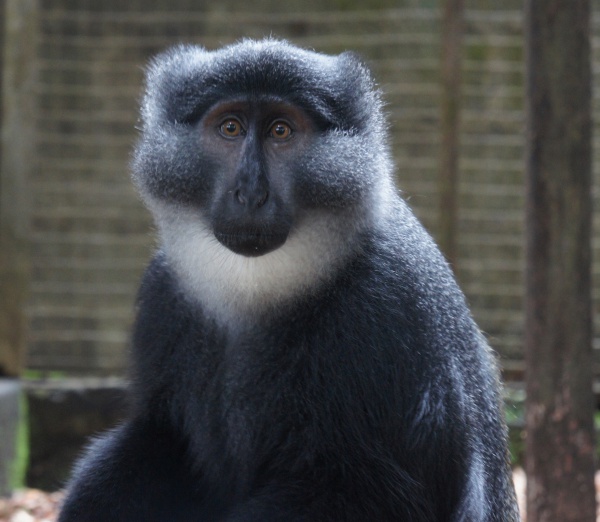Facts About Preuss's monkey
The Preuss's monkey, also known as Preuss's guenon, is an energetic primate native to the mountainous forests of eastern Nigeria, western Cameroon, and Bioko in Equatorial Guinea. Initially believed to be a subspecies of L'Hoest's monkey, Preuss's monkey is now correctly classified under the genus Allochrocebus, having previously been assigned to the genus Cercopithecus.
These monkeys primarily feed on fruits, leaves, and insects, although they occasionally raid human crops when given the chance. They are easily identified by their dark fur and distinctive white chin. Adult males also possess a blue scrotum and can weigh up to 10 kg. Preuss's monkeys live in social groups, or troops, typically consisting of one adult male, several females, and their offspring, with a usual total of around 17 members. Female Preuss's monkeys generally give birth to a single infant approximately every three years. The young reach maturity at around four years old and have a lifespan of up to 31 years.
Sadly, Preuss's monkeys are classified as an endangered species, primarily due to habitat destruction and hunting. They form part of the rich biodiversity of the Guinean Forests of West Africa. Some of these monkeys are kept in captivity at the Centre for Education, Rehabilitation, and Conservation of Primates and Nature (CERCOPAN) in Cross River State, Nigeria.
There are two recognized subspecies of Preuss's monkey: the Cameroon Preuss's monkey (Allochrocebus preussi preussi) and the Bioko Preuss's monkey (Allochrocebus preussi insularis).

 Benin
Benin